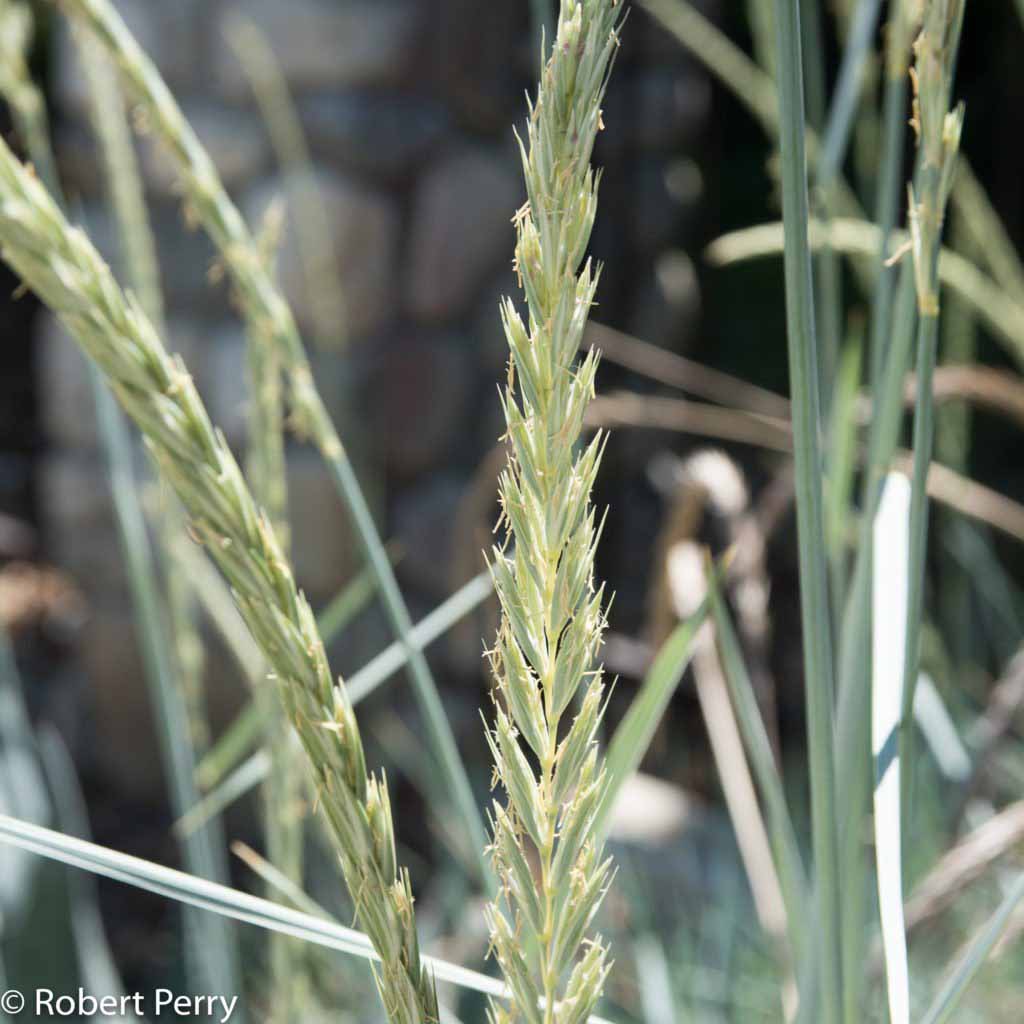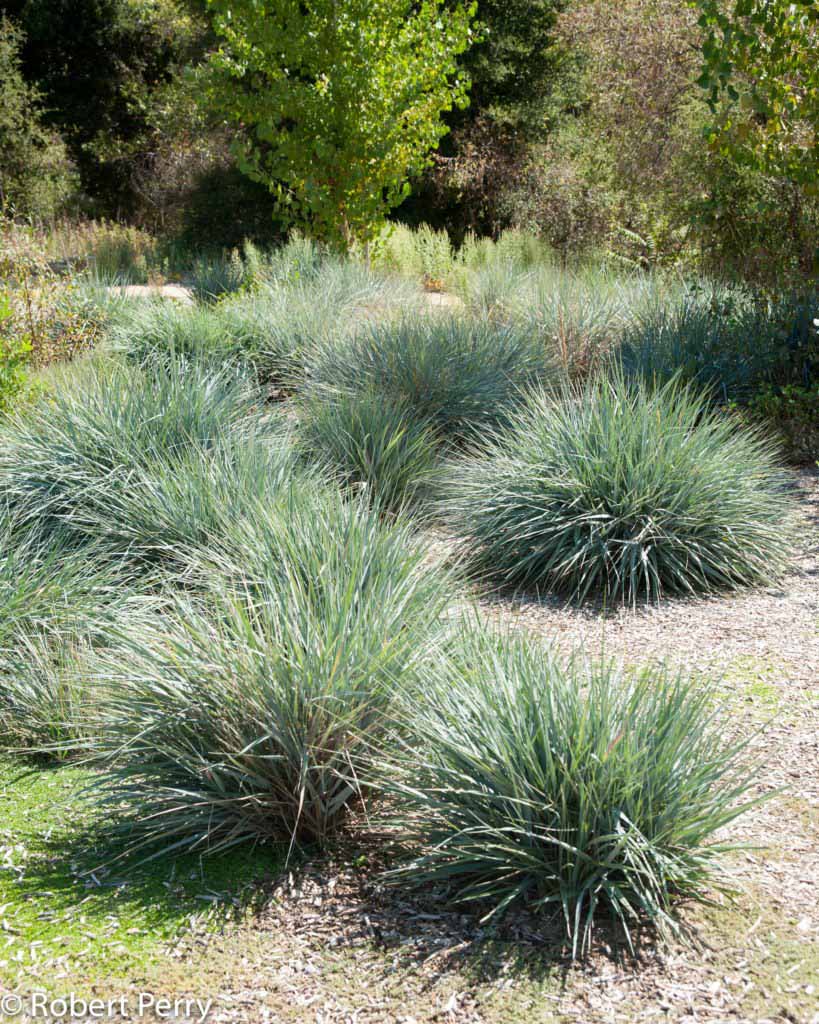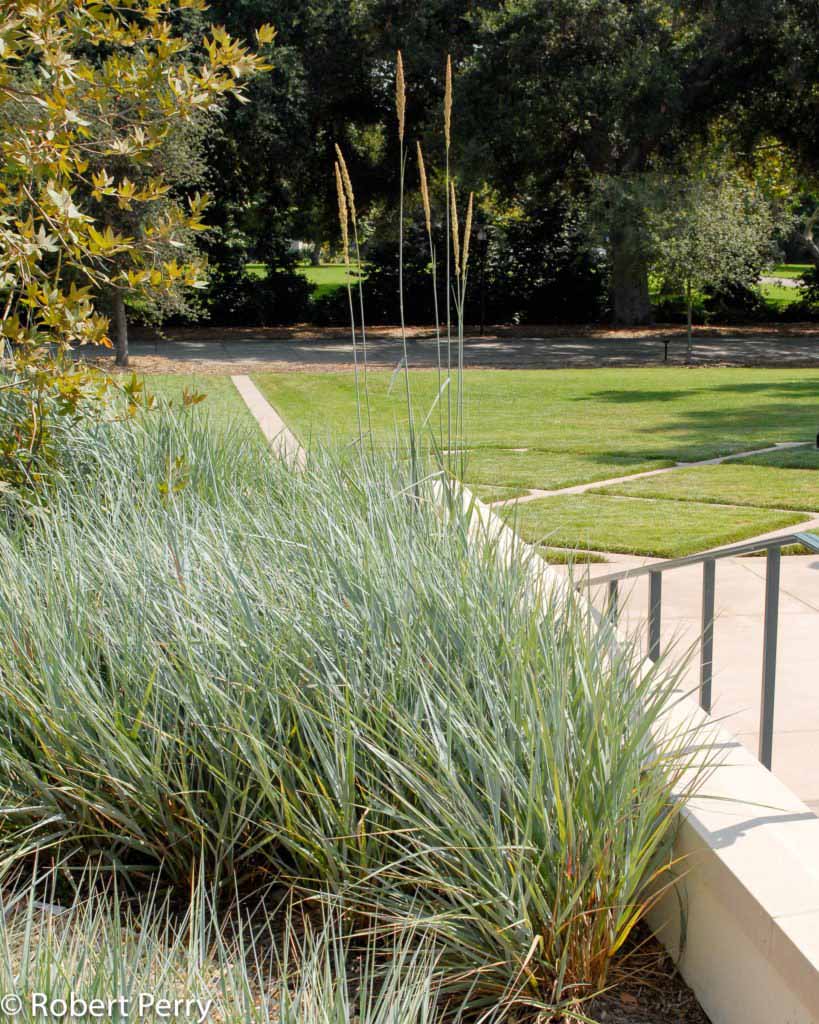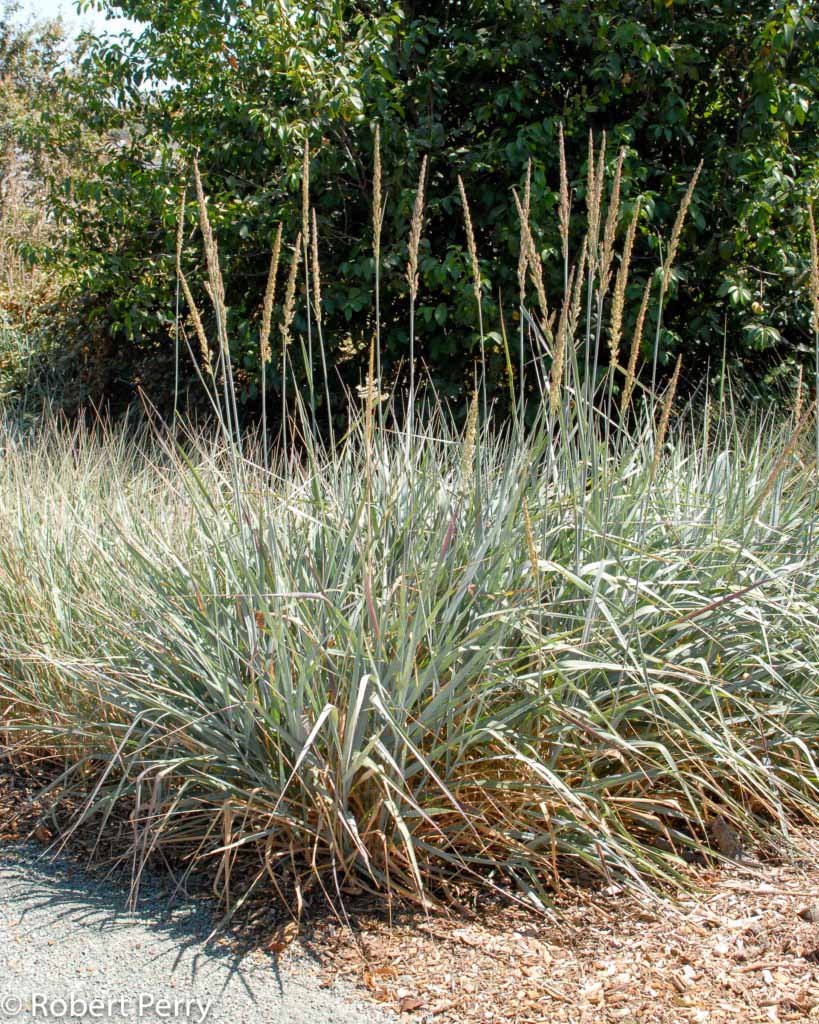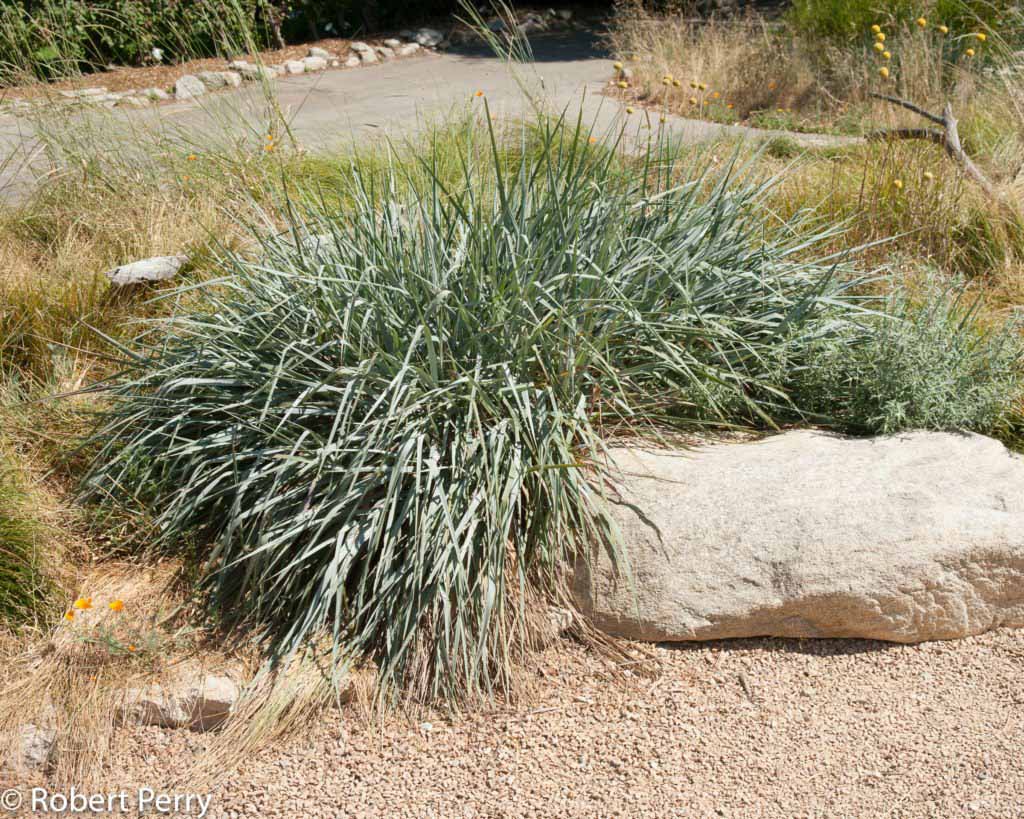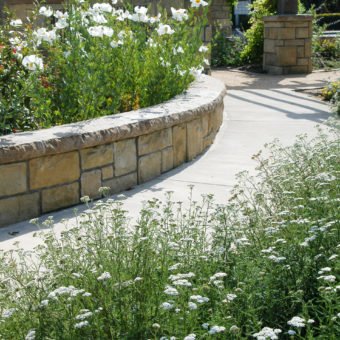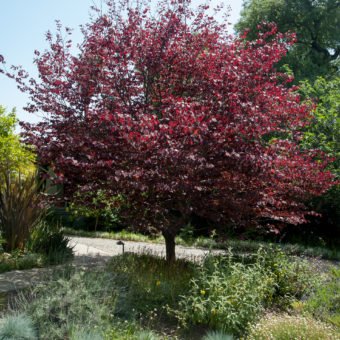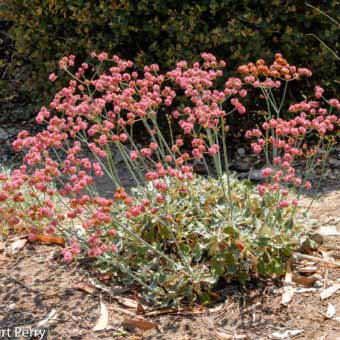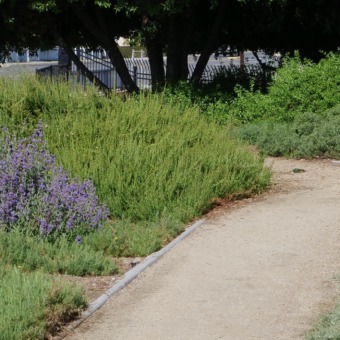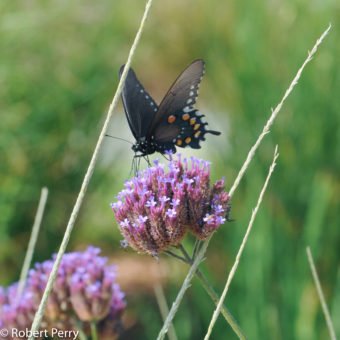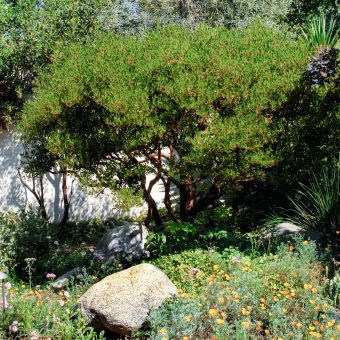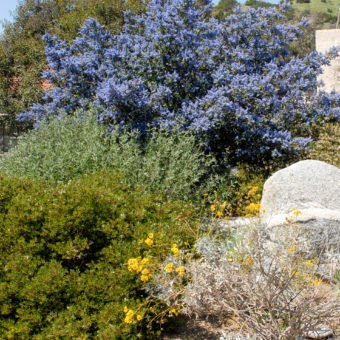Leymus condensatus ‘Canyon Prince’ is a highly adaptable native grass cultivar with distinctive blue-green foliage growing 2-3 ft. tall and spreading 6-8 ft. and more. Attractive flower inflorescences develop in spring and grow far above the foliage and last into summer.
Canyon Prince wild rye is commonly used as a foliage accent plant due to its rich foliage color. It is often planted around boulders and dry stream beds where it forms dense mounding shapes. It does not respond well to shearing and maintains good character for many years. Over time it can spread into other parts of the garden and will need to be removed. This is a tough and durable grass that needs space to grow.
